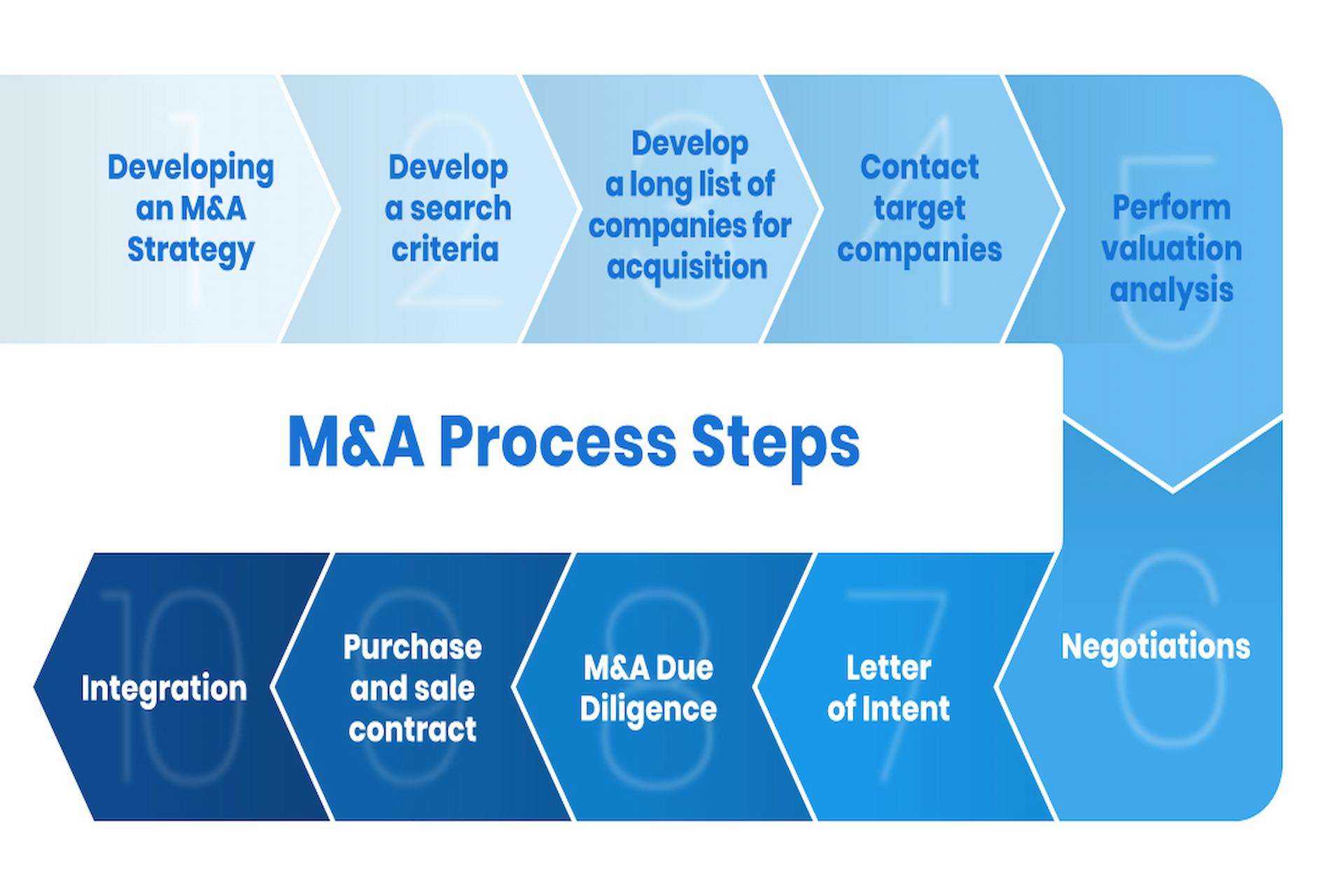Corporate leadership must identify and pursue growth opportunities in the increasingly competitive and financially constrained environment of today. They should focus on strengthening the market position of their organization and overall financial performance. Among others, growth strategies can include merging with or acquiring existing operations from competitors. Mergers and Acquisitions (M&A) is basically an umbrella term that refers to the process of combining assets and business entities through business transactions. Earlier, as Anand Jayapalan mentioned, M&A transactions have parallels to sales of real estate, as there is an offer, inspection period, potential renegotiations, and closing involved in the process. This whole timeline can take more weeks, months, or years, as well as require regulatory or shareholder approval.
M&A is a step-by-step process and often varies in length depending on the parties involved. The most common steps involved in the acquisition of a company on the buyer side of an M&A include:
Establish the strategy: One must consider what they are hoping to accomplish and what they must do to get there. Obtaining funding would be a primary consideration.
Identify and contact potential target companies: A robust search criteria have to be developed for the acquisition of a company.
Exchange initial information: Smooth information exchange has to be ensured as each buyer must know what they are getting, and the seller would want the sale to occur as soon as possible. But it is also vital to make sure that confidential information is protected in the process. The parties involved must avoid creating any kind of antitrust liability when exchanging competitively sensitive information.
Value a company and recognize synergies: Valuation analysis largely involves investigating, evaluating, and understanding the value and utility of a company. Synergies here can imply an expanded customer base, a new fleet of vehicles to use or access to supply.
Due diligence: Subsequent to the initial exchange of information, greater due diligence is needed to verify the claims made by the seller. For instance, in case a company claims to have 1000 paying clients, documentation should be properly verified. If a firm owns patents or other intellectual property, then its existence must be effectively reviewed.
Offer and negotiation: After acquiring all the vital information, parties should come to a final agreement on terms and price. This might be adjusted on the basis of the revelations made during due diligence.
Purchase agreement and other contracts: Various contracts have to be drawn up in order to complete the sale. Due to the high importance of these contracts, it is better to get them reviewed by a qualified M&A expert before signing.
Deal closure and post-merger integration: The terms of how the integration shall look should be established during the sale. Post-merger integration planning must include what will happen to current employees.
Earlier, Anand Jayapalan talked about the importance of staying organized in the process of M&A, as curveballs and issues can crop up at any time. The parties to a merger are considered to be independent entities till the deal is ultimately closed.
